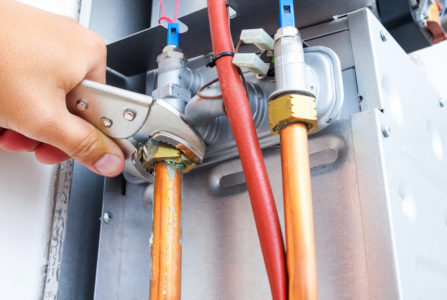Safety Tips For Gas Handling
Filed under: Safety Tips
Comments: None

Photo credit: Shutterstock
The power of gas is not to be underestimated! Certain gases, such as SF6, are renowned in the industry to be incredibly beneficial for electrical equipment due to their ability to push the maximum electric field without breaking down. With great power, however, comes a great potential for safety hazards and legitimate injuries or damage. At NCE, we provide expert professional gas handling services to ensure that the transportation, handling, and storing of gas cylinders run smoothly and safely.
Below, we’ve compiled a few gas cylinder safety tips used to help avoid and prevent dangerous gas-related incidents.
How Should Gas Cylinders be Moved?
It is through the transportation of gas cylinders where perhaps the most potential for danger exists. In fact, the vast majority of injuries occur during the transportation or moving cylinder process. Anytime a cylinder is dropped from height, mistakenly tipped over, or is heat-exposed could pose a serious, immediate threat. When moving cylinders, be sure that there is a clear path ahead of you without anything on the floor or equipment that could restrict your movement. Dropping the cylinder could create an explosion or leak a hazardous gas, so never lift a gas cylinder by hand. Instead, cylinder carts are designed to safely get cylinders from point A to point B.
For yourself, always wear protective equipment when handling gases, including footwear, safety glasses, thick gloves, and more. Your personal gear and equipment could be the deciding factor that saves you from the harmful effects of certain gases. SF6, for example, is not flammable or toxic, but can cause serious damage to your health such as suffocation, eye irritation, or even chemical burns.
How Should Gas Cylinders be Stored?
Now that you know how gas cylinders should be moved, understanding how and where they should be stored is a completely different task.
Where: Firstly, find a storage area that is weatherproof. If you’re working on an outdoor construction site, utilize a cylinder storehouse or find somewhere inside with strong ventilation. Clearly, you want nothing that’s combustible or wet surrounding the cylinders at any point.
How: A general gas cylinder safety tip is to always create signage for areas with cylinders or for any combustible equipment area. This step reminds whichever technicians or contractors on the job to proceed with caution. As for the cylinders, leave them inside the cylinder carts mentioned above, store them in an upright position attached to a chain, and ensure all of it’s valves or caps are completely closed and secured. If you have empty cylinders, they should be far away from the ones that are currently full.
Trust NCE For All Your Gas Handling Needs!
When dealing with the handling or transportation of gases, safety should always be the main priority. At NCE, we pride ourselves on providing the most efficient, safe, and innovative gas handling services for our clients varying in industry. Our technicians are trained in the latest regulations and practices regarding filling, degassing, and transporting SF6 breakers from one site to another. We’ve worked on large scale GIS projects and partnered with hundreds of electric companies for secure transportation. Looking for a gas partner you can trust? Call the team at NCE today at (215) 945-7632!
